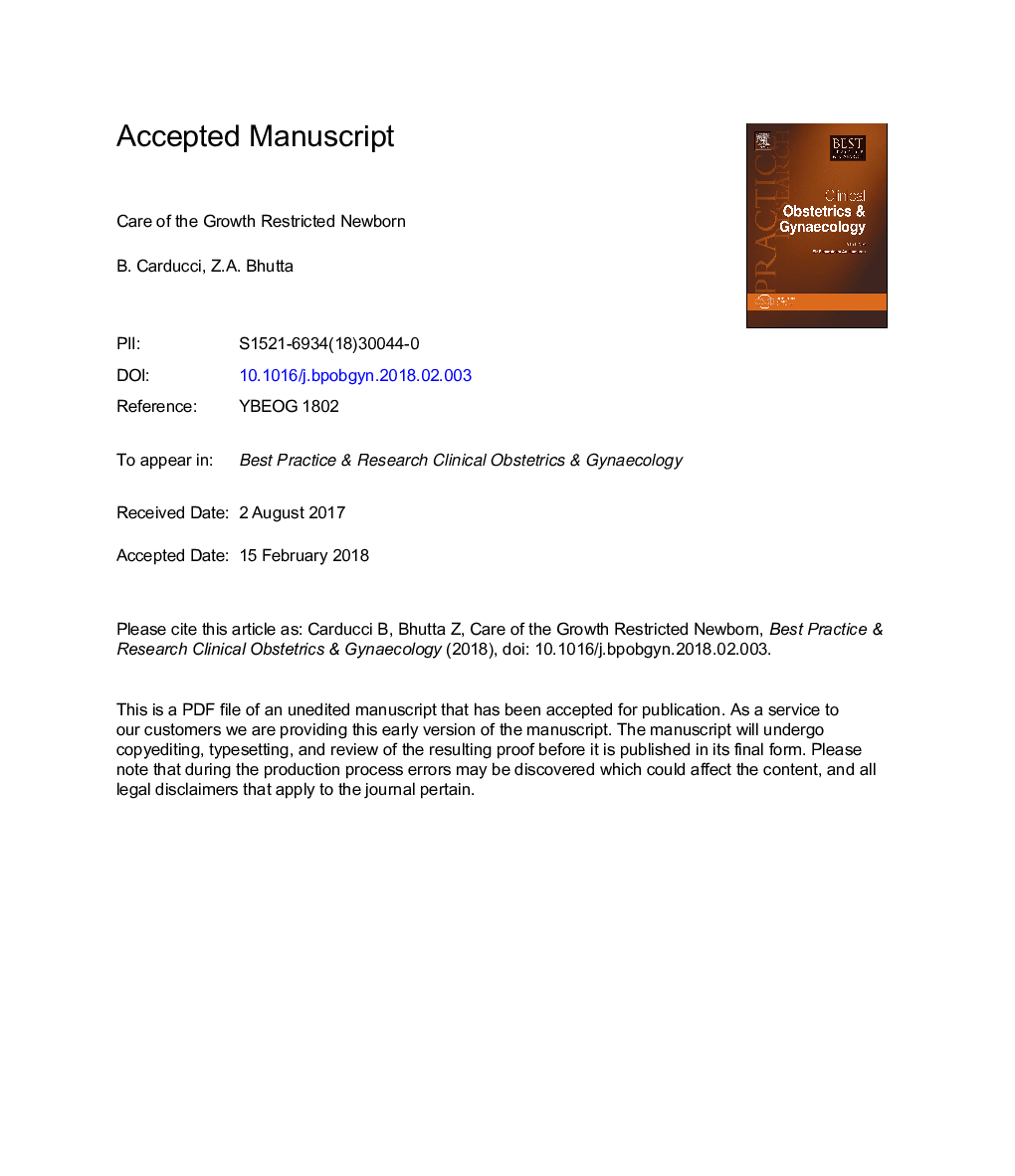| Article ID | Journal | Published Year | Pages | File Type |
|---|---|---|---|---|
| 8776495 | Best Practice & Research Clinical Obstetrics & Gynaecology | 2018 | 33 Pages |
Abstract
With the first 1,000 days of life proving to be a critical window of opportunity for physical and cognitive growth and development, an optimal intrauterine environment is vital. If fetus needs are compromised prenatally, there is an increased risk of intrauterine growth restriction (IUGR), and infants being born premature, low birth weight (LBW), or small-for-gestational age (SGA). Specialized care of these high-risk infants is necessary in terms of preconception interventions, resuscitation, thermoregulation, nutritional support and kangaroo mother care. Significant evidence supports exclusive breastfeeding as the standard of care for feeding SGA, preterm, LBW and very low birth weight infants. Expressed milk or donor milk may also require fortification, to meet higher nutrient needs of these newborns. Future research should address the gap in the literature on specific care of term and preterm IUGR and or SGA infants, and strengthening evidence for human milk bank models and emollient care.
Keywords
Related Topics
Health Sciences
Medicine and Dentistry
Obstetrics, Gynecology and Women's Health
Authors
Bianca MSc, Zulfiqar A. PhD, MBBS, FRCPCH, FAAP,
